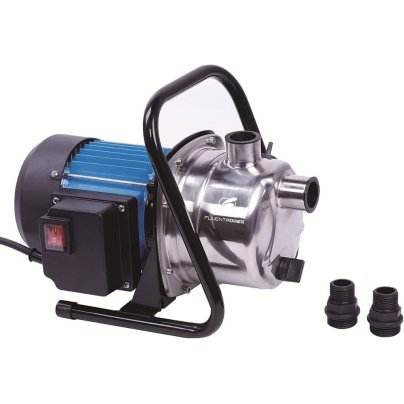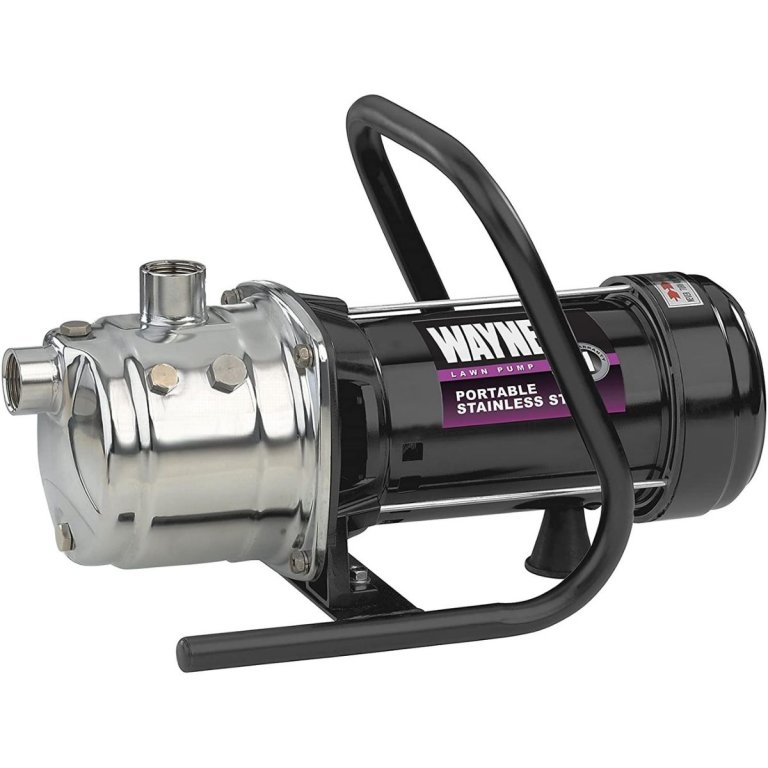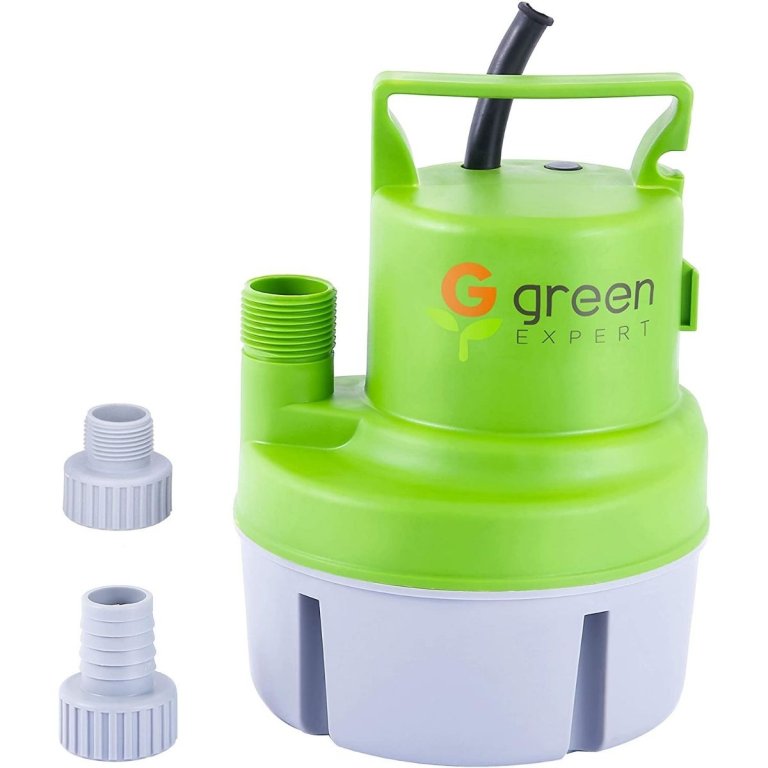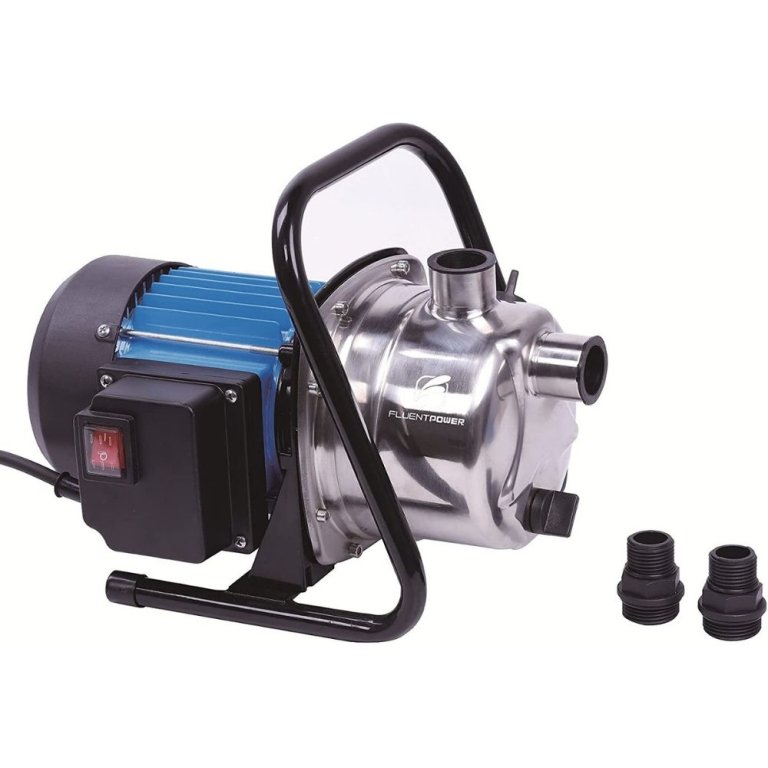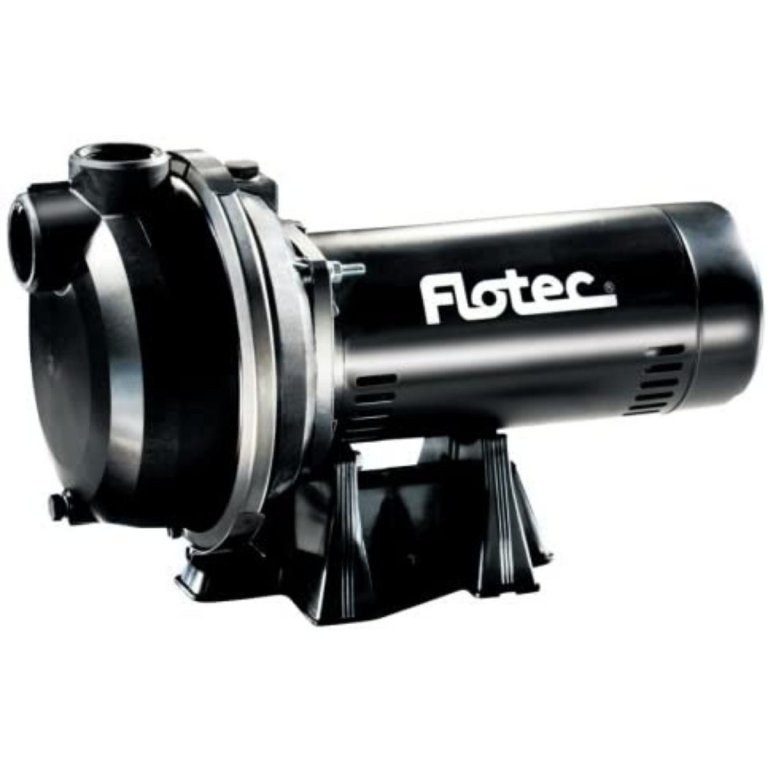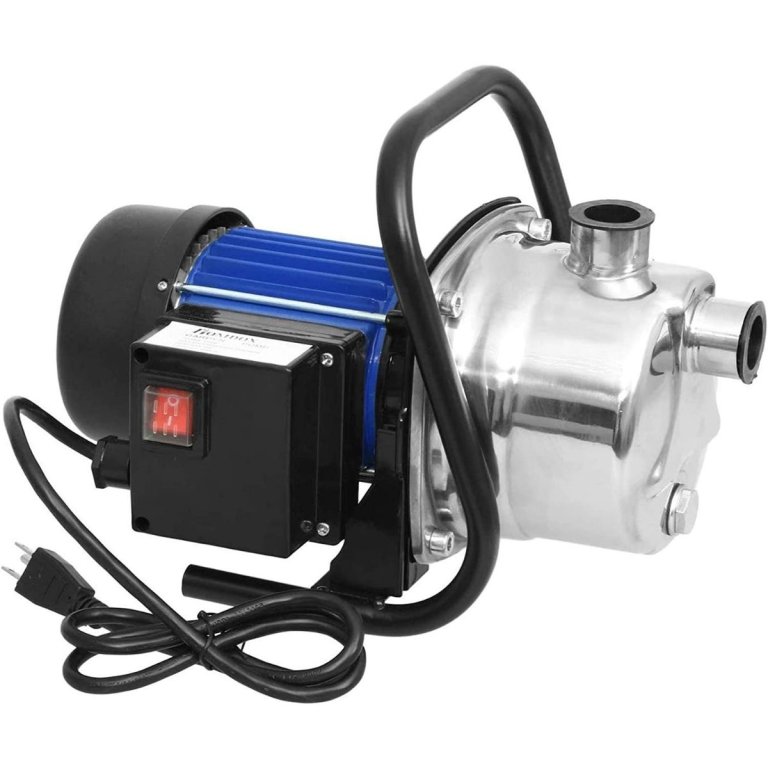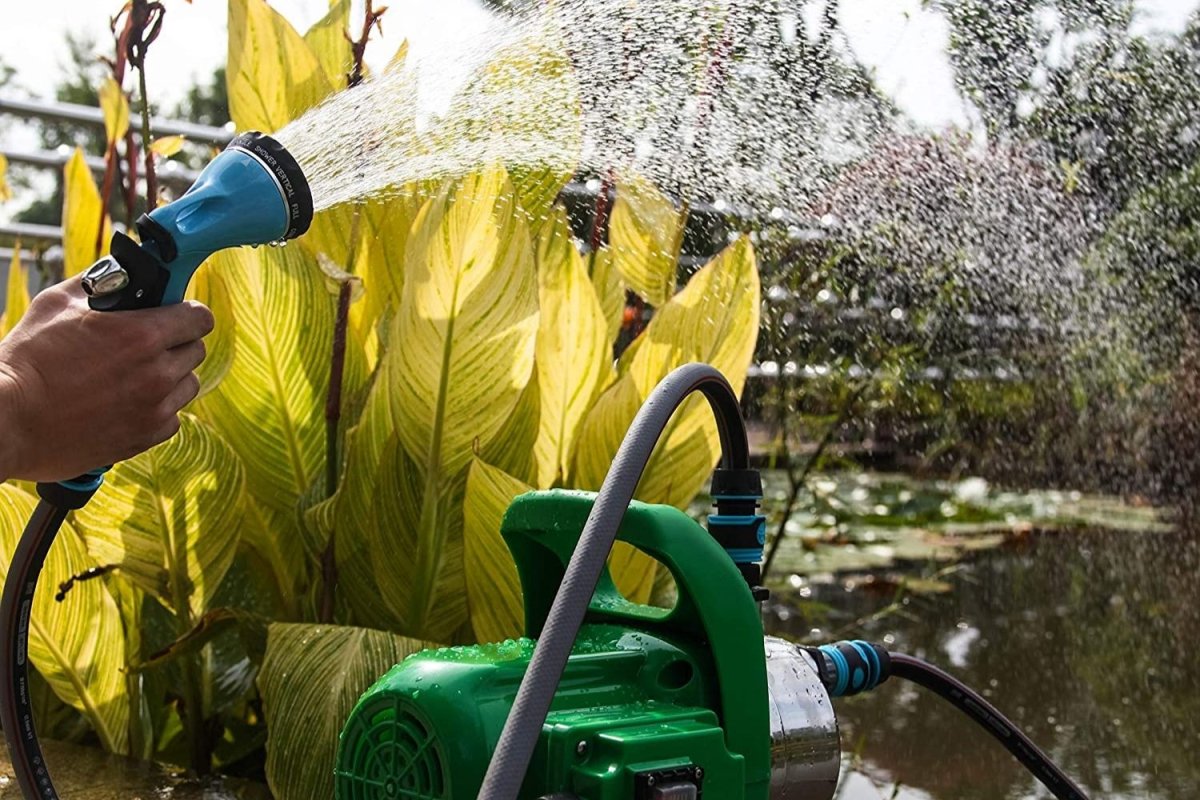
We may earn revenue from the products available on this page and participate in affiliate programs. Learn More ›
Sprinkler systems are a great way to keep the lawn green and flowers healthy, but when a pond, lake, or well is the primary source for water it can be difficult to achieve the proper pressure and water flow. Sprinkler pumps provide constant pressure through the system, making it possible to better regulate the flow of water. They can also be used in very shallow ponds and wells so available water doesn’t go to waste.
Choosing the best sprinkler pump for your home can seem complicated if you aren’t sure what you need. Take a look at the top products below and think about the sprinkler pump type, pressure level, flow rate, and suction head that’s best for your property. Another important factor in determining the best sprinkler pump for your situation is the distance from the pump to the sprinkler system, so it might make sense to take some measurements before shopping.
- BEST OVERALL: WAYNE PLS100 1 HP Portable Stainless Steel Lawn Pump
- BEST BUDGET: Green Expert Utility Pump 203617
- SHALLOW WATER SOURCE PICK: FLUENTPOWER 1 HP Stainless Steel Lawn Sprinkling Pump
- BEST HIGH-CAPACITY: Flotec FP5172 Pump Sprinkler 1.5Hp
- BEST BOOSTER: Homdox 1.6HP Stainless Shallow Well Pump Booster
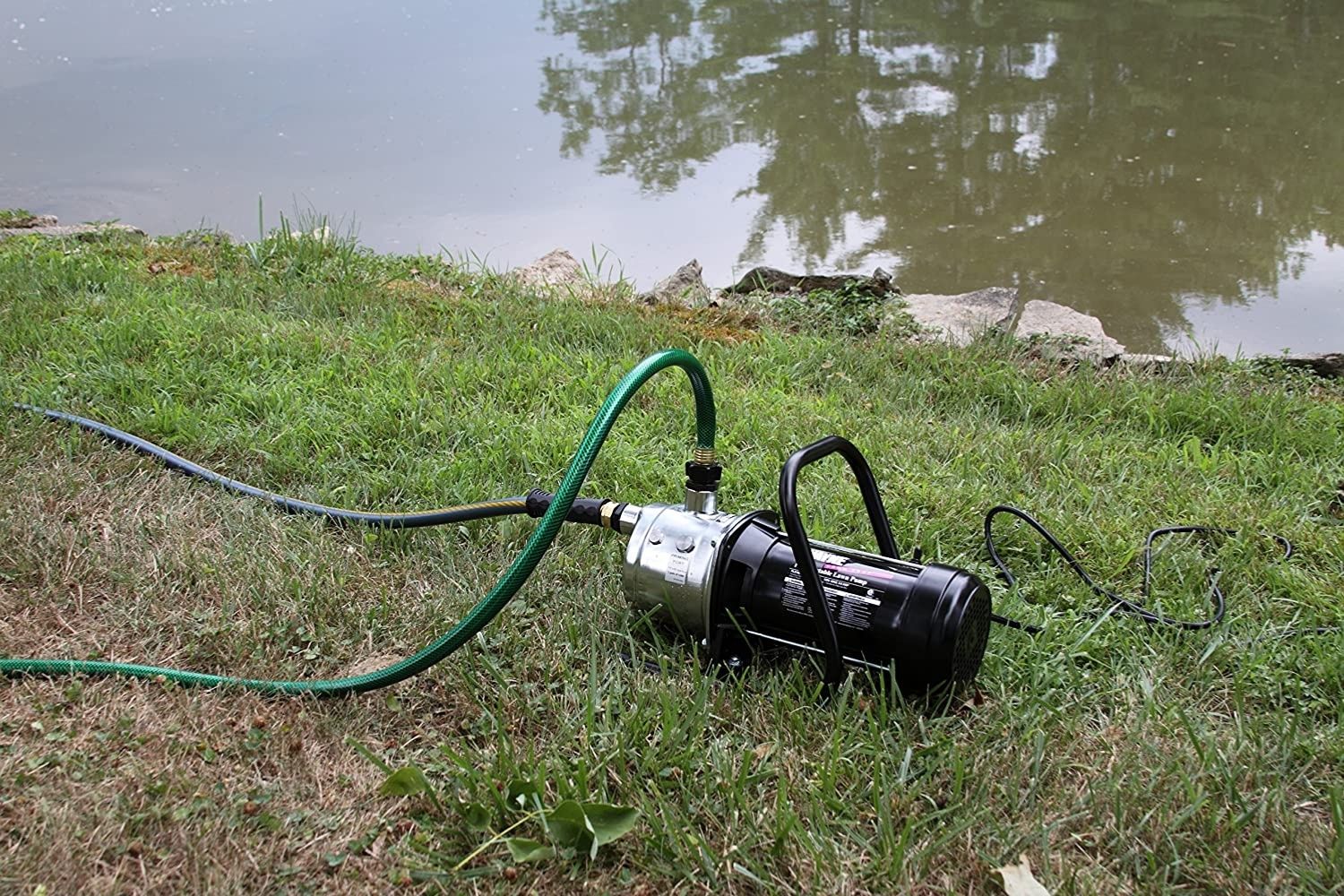
What to Consider When Choosing the Best Sprinkler Pump
Sprinkler pumps are a good choice for water irrigation systems that are fed by ponds, lakes, or wells, but finding a sprinkler pump for your yard needs should start with an understanding of how these pumps operate. Some of the important criteria to think about include pump type, material, horsepower, power supply, and a few other important considerations mentioned below.
Type
The type of sprinkler pump that’s best for your needs is primarily based on where the pump needs to be in relation to the water source in order to operate. Most pumps you encounter will be centrifugal, submersible, or booster sprinkler pumps.
- Submersible sprinkler pumps are simple and effective when they’re used in a deep source of water. As implied by the name, these pumps must have their inlet fully submerged to function properly. For this reason, they aren’t a good option for shallow streams or wells.
- Centrifugal sprinkler pumps are a great option for shallow sources of water because they use a hose to draw water into the pump. For the pump to work properly, the water source has to be just deep enough to fully submerge the end of the hose. These pumps can burn out if the water source runs dry, however, because they aren’t designed to pull in air.
- Booster sprinkler pumps are a subset of centrifugal sprinkler pumps that boost the water pressure through an existing system. A primary pump draws water from a water source, sending it through a hose to a booster sprinkler pump, which increases the water pressure as it flows through the pump, and then directs the flow of water to the sprinkler system. These sprinkler pumps can also be used as primary pumps if necessary.
Material
A sprinkler pump’s durability and resistance are strongly correlated to the material used in its construction. Common materials used for these pumps include stainless steel, fiberglass-reinforced thermoplastic, and cast iron.
- Stainless steel is a water-resistant material commonly used for sprinkler pumps because it’s durable enough to protect the pump from impact damage. It’s also lightweight, ensuring that the pump isn’t too heavy to carry or set up.
- Fiberglass-reinforced thermoplastic is completely waterproof and usually lighter than either stainless steel or cast iron. However, it isn’t as durable as either of the others, so it may not be a good choice for rough work environments.
- Cast iron is made for strength and durability, but it’s heavier than both stainless steel and fiberglass-reinforced thermoplastic. This can be a good thing for submersible sprinkler pumps because the extra weight allows cast-iron pumps to sink quickly and remain submerged.
Horsepower
Sprinkler pumps are driven by an internal motor, which allows them to pull in standing water and pump it out over a short distance. The more powerful the pump’s motor, the better it is at pumping water. Powerful pumps mean increased pressure output, flow rate, and suction depth. They also allow water to be pumped a greater distance from the sprinkler pump to the sprinkler system.
The power output of a motor is measured in horsepower (HP). Smaller sprinkler pumps may have motors capable of a maximum power output of just 0.16 HP, while more robust pumps may have motors that can exceed 3 HP. The most common sprinkler pumps use motors with power outputs between 1 HP and 1.5 HP.
Power Supply
When shopping for a sprinkler pump, it can be easy to focus on the water pressure, flow rate, and pump type, but it’s just as important to determine the type of power supply (and in the case of corded pumps, the length of the power cord). A short cord length might eliminate some pumps from consideration unless the user is willing to invest in a waterproof extension cord.
Most sprinkler pumps use direct electrical connections to a power outlet or power generator through an extension cord in order to operate, though there are some exceptions that may run on solar power. Some pumps will also have a dual-voltage option that allows the pump to run using either a 115V power source or a 230V power source.
Pressure Level and Flow Rate
Pressure level and flow rate are used regularly to determine which product would be the best sprinkler pump for a specific sprinkler system. Pressure is expressed in pounds per square inch (PSI), and the maximum pressure output of the sprinkler pump should meet or slightly exceed the maximum pressure output of the sprinkler heads. If the pressure output is too high it could damage the sprinkler system.
Flow rate is generally measured in gallons per minute (GPM), though some manufacturers label their pumps in gallons per hour (GPH) to make the flow rate look more impressive. This flow rate can range from just 10 GPM to over 100 GPM for the standard sprinkler pump, while pressure output typically starts at about 40 PSI and can exceed 150 PSI for commercial applications.
Suction Head
The suction head, or suction depth, is measured in feet (ft) and refers to the maximum depth at which the sprinkler pump can draw water. The deeper a pump’s inlet hose is placed, the more difficult it is for a centrifugal pump to pull water up the length of the hose and through the pump. Submersible sprinkler pumps are also limited by the suction head; they are trying to push water up a hose instead of pulling it, which reduces the maximum distance the pump can be from the sprinkler system.
Keep in mind: Depth doesn’t just refer to water. If the pump hose needs to be dropped through 10 feet of open air before reaching the water source it will also need to pull water up that same 10 feet, creating an increased strain on the pump. Look for a pump that has an appropriate suction head for the depth of the water source.
Distance to System
The distance to the sprinkler system from the pump matters. This is one way of determining whether a sprinkler pump is appropriate for a sprinkler system or if it isn’t powerful enough to transport the pressurized water the entire distance between the water source and the sprinkler. If the distance to the system is too short, the pump will not be able to maintain the pressure and flow rate of the water all the way to the sprinklers.
The distance from the sprinkler pump to the sprinkler system can range from under 10 feet for some submersible sprinkler pumps to well over 150 feet. Before choosing a pump, it’s a good idea to measure the distance from the water source to the sprinkler system inlet, as you want to be sure that the pump will be effective at transporting water to the sprinkler heads.
Our Top Picks
These recommendations were selected for their outstanding quality and overall value, with a heavy emphasis placed on the major considerations mentioned above. Read on in order to find the best sprinkler pump for lawn and garden sprinkler systems.
Best Overall
WAYNE PLS100 1 HP Portable Stainless Steel Lawn Pump
Pros
- Lifts water up to 180 feet
- Maintains pressure up to 80 PSI
- Durable stainless steel casing
- Includes garden hose adapter
Cons
- Heavy compared to other pumps
This centrifugal sprinkler pump is made with portability in mind. It weighs just 20.6 pounds and comes with an angled handle, making it easy to carry, set up, and load into a vehicle. The corded sprinkler pump has a fan-cooled 1 HP motor that can produce a max flow rate of 850 GPH, or 14.2 GPM at a maximum pressure of 60 PSI. The WAYNE PLS100 also has a suction depth of up to 20 feet and a maximum distance to the system of 150 feet.
The pump has 1-inch suction and discharge threads and comes with a 0.75-inch garden hose adapter. Durable stainless steel casing protects the pump’s internal working parts from being damaged in the back of a work truck or while being set up. When the job is done and the garden is watered, turn off the pump at the switch, and pack it away until it’s needed again.
Best Budget
Green Expert Utility Pump 203617
Pros
- Affordable, low-budget model
- Can be submerged up to 16 feet
- Waterproof housing
- 25-foot-long power cord included
Cons
- Plastic casing susceptible to breakage
- Lift height limited to 16.4 feet
- Not ideal for shallow streams or wells
Irrigate the garden with water from a lake, pond, or well by connecting the affordable and portable Green Expert pump to the sprinkler system. It has a lightweight, plastic casing that is completely waterproof, allowing the entire sprinkler pump to be submerged to a depth of 16 feet. The submersible sprinkler pump can then pull water in and pump it up through a hose to a maximum depth of 16.4 feet.
The pump has a 0.16 HP motor, a 25-foot waterproof power cord, and a simple carrying handle. Its maximum flow rate is 17.6 GPM, though this drops to 10 GPM when the pump is 10 feet from the sprinkler system. This pump is best for water systems that are close to a water source. When it isn’t being used for irrigation, it can be repurposed to empty a hot tub or pool.
Shallow Water Source Pick
FLUENTPOWER 1 HP Stainless Steel Lawn Sprinkling Pump
Pros
- Maximum lift height of 144 feet
- Works as primary or secondary pump
- Overheating protection
- Corrosion-resistant stainless steel housing
Cons
- Limited suction depth (8 meters)
The FLUENTPOWER sprinkler pump can use ponds, pools, wells, and even rain barrels as effective shallow water sources for maintaining the lawn and garden. Some of its best features are a corrosion-resistant stainless steel casing, built-in overheating protection that prevents the 1 HP motor from burning out, and a waterproof on-off switch so the pump can be used safely in wet conditions. It pumps water at a flow rate of 14 GPM with a maximum suction depth of 26 feet and an output pressure of 60 PSI.
Tote the 15.4-pound sprinkler pump by its convenient carrying handle for easy portability and storage. It’s pretty versatile too. It can operate as a primary pump, at a maximum distance of up to 144 feet from the sprinkler system, or be used as a secondary pump for the purpose of boosting the water pressure in an existing sprinkler system.
Best High-Capacity
Flotec FP5172 Pump Sprinkler 1.5Hp
Pros
- Self-priming design works with automatic sprinkler systems
- Capable of operating 30 sprinkler heads
- Dual-voltage capability
- Heavy-duty fiberglass-reinforced thermoplastic
Cons
- Low water pressure (47 PSI)
Centrifugal sprinkler pumps are great for pumping water from shallow water sources like a pond or well because they draw water up through a hose instead of relying on the entire pump being submerged. Flotec’s FP5172 1.5 HP centrifugal sprinkler pump can pull water up from a maximum suction depth of 20 feet and is capable of operating up to 30 sprinkler heads at once. This device pumps water at a moderate flow rate of 67 GPM with a water pressure of 47 PSI. Flotec’s pump is constructed of heavy-duty, fiberglass-reinforced thermoplastic that’s waterproof and resistant to wear and tear. Because the sprinkler pump is self-priming, it can function properly with an automatic sprinkler system. Other features that make the FP5172 worth considering are its dual-voltage capability—it can operate on either a 115V or 230V electrical system—and its dewatering valve, which helps drain the remaining water from the pump so it can be properly winterized.
Best Booster
Homdox 1.6HP Stainless Shallow Well Pump Booster
Pros
- Maximum lift height of 137 feet
- Dewatering outlet for after-use drainage
- Sturdy iron handle
- Corrosion-resistant steel and aluminum build
Cons
- Less durable plastic components
- Not meant for use as a primary pump
Ideal for augmenting the water pressure of an existing sprinkler system, Homdox’s booster sprinkler pump can be connected to a primary pump, allowing both pumps to work in series for a more powerful water output. This product has a 1.6 HP motor, which is enough power to pump water at a flow rate of 14 GPM and a top PSI of 66. It can function at a suction depth of 23 feet and a distance of 137 feet.
The corded sprinkler pump weighs just 17.4 pounds and has a stainless steel head, aluminum body, and an iron carrying handle to make it easier to set up or put away. One of its handiest features is a dewatering outlet that drains the water from the machine so it doesn’t get damaged from expanding ice in freezing temperatures.
Our Verdict
We recommend the WAYNE sprinkler pump for watering the average lawn or garden based on its quality construction, 180-foot lift height, and sufficient PSI. If you plan on setting up a larger automatic sprinkler system, the Flotec pump can support up to 30 sprinkler heads with an especially durable build that withstands high-capacity usage.
How We Chose the Best Sprinkler Pumps
Finding the best sprinkler pumps was possible after conducting research into all the important features needed in draining and pumping water effectively. The key factors that should be included in sprinkler pumps should always be water pressure (GPM/GPH or PSI) and the water depth at which a pump can function properly.
Many of the above picks also have features that enhance user-friendliness like durable casings for long-lasting use, handles for pump removal and placement, screens to prevent large objects from entering the pump’s mechanisms, and even dewatering outlets to remove water from the pumps after use.
Many of the pumps available also have long power cords for easy plug-in and installation. However, it is always important to check the depth at which a pump can be placed and ensure that the water pressure meets the needs of your project.
FAQs
Before investing in a new sprinkler pump for the sprinkler system, take a look at these frequently asked questions and their answers to learn more about which pump is most appropriate for keeping your lawn and garden green and healthy.
Q: What size pump do I need for my sprinkler system?
Determine the proper size for the pump based on the sprinkler head pressure requirements that are measured in gallons per minute (GPM) and pounds per square inch (PSI). Multiply the GPM measurement by the number of sprinkler heads to find the GPM requirement for the entire system, then compare the GPM and the PSI, and look for a pump that can handle this pressure requirement.
For instance, 10 sprinkler heads that are rated at 40 PSI and 6 GPM will equal a system-wide requirement of 60 GPM at 40 PSI. Choose a pump size as close to this output as possible; a pump that is too powerful could blow out the sprinkler heads.
Q: Does a sprinkler pump need a pressure tank?
A sprinkler pump can work without a pressure tank, but the pump will wear out at a faster rate because it must cycle on and off repeatedly.
Q: How do I maintain a sprinkler pump?
There are three important things to do to maintain a sprinkler pump. The first is simply priming the pump with water before turning it on to ensure that the motor doesn’t burn out. The second is conducting regular inspection checks to determine if the pump is leaking. The final step is to winterize the pump by draining the entire sprinkler system before freezing weather hits. This prevents water from freezing and cracking the pump, hoses, sprinklers, valves, and any fasteners throughout the system.
Q: How long do sprinkler pumps last?
Sprinkler pumps generally last between two and five years, though they will last longer when they are properly maintained.


